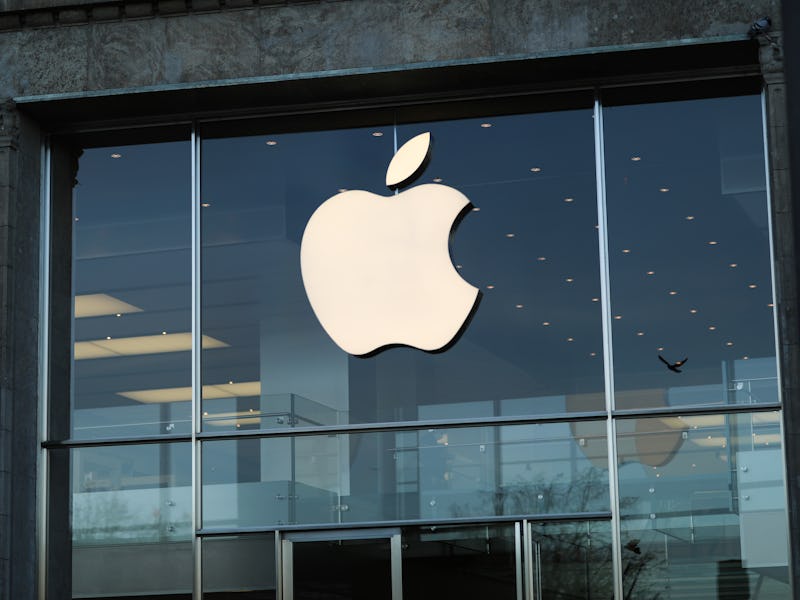Apple car: release date, self-driving tech and specs for rumored EV project
Apple may be building an electric car with advanced battery technology, and it could arrive soon.

Apple may be working on an electric car, with plans to leverage the sort of sensors used in autonomous vehicle projects.
The long-rumored plan received new interest this week, when Reuters reported Monday that Apple is planning to release a car with advanced battery technology as early as 2024. The company is also exploring lidar sensors, which are used in some autonomous cars to measure the distance of objects from the vehicle.
It's an exciting time for the so-called "Project Titan," which has wildly oscillated in press reports over the years from being a stripped-down set of sensors to being a full-blown car.
The Wall Street Journal reported in February 2015 that Apple was working on a minivan-like vehicle. By October 2016, reports suggested Apple was scaling back to develop an autonomous driving system for other cars. Reports this week suggest Apple is back to exploring a complete car.
Here's what to know based on the most recent details:
Apple car: when will it be released?
The latest report from Reuters suggests Apple is aiming to release its car in 2024. Note that this would be entirely subject to change. The biggest hurdle could be the coronavirus pandemic, which insiders suggested could delay plans to 2025.
The other hurdle is that Apple has never made a car before. Tesla, the all-electric car company headed up by Elon Musk, started producing its mass-market Model 3 in July 2017. Although Tesla had been producing cars since 2008, it still struggled to ramp up manufacturing to levels required by this cheaper vehicle. Tesla reached its goal around 12 months later, and Musk would go on to describe the experience as a "bet the company" moment.
Apple car: what will be the battery specifications?
The latest reports suggest Apple will use a lithium iron phosphate battery in its vehicles. This would be important as it could avoid the use of cobalt, an expensive element largely sourced from the Democratic Republic of Congo under harsh conditions.
The design choice could also eliminate nickel from the equation. Taken together, removing both of these expensive materials could dramatically cut battery costs. BloombergNEF found battery prices had dropped from $1,100 per kilowatt-hour in 2010 to just $156 by 2019. Wedbush Securities analyst Dan Ives told CNBC in June 2020 that this new chemistry could push battery prices as low as $60 to $80 per kilowatt-hour.
An electric car charging.
“If you’re talking about batteries that can last twice as long for the same price, it completely changes the math for the consumer,” Ives told the publication. “Iron phosphate batteries are safer, and they can have second or third lives as electricity storage.″
Tesla has started employing lithium iron phosphate in its vehicles, according to October reports. Tesla Model 3 cars using the new chemistry started shipping from the Giga Shanghai factory to Europe that month.
Beyond the chemistry, Apple is also rumored to be employing a "monocell" design where modules and pouches are removed to create more space for the cells.
Apple car: will it have self-driving capabilities?
A big question mark is its autonomous driving capabilities. CEO Tim Cook described autonomy in 2017 as "the mother of all A.I. projects," dropping a major hint about the company's ambitions in this area.
Apple is rumored to be planning lidar sensors for its new car. These sensors send out light, time how long it takes to bounce back, and use that to work out the distance. This would enable the car's systems to detect the distance of objects.
The company may use its internal lidar technology. Apple introduced such a sensor to the iPad earlier this year, followed by the iPhone 12 Pro models. These are used to power augmented reality apps, which overlay virtual objects over a view of the real world.
Lidar enables the device to calculate the distance to objects and walls, using that to build a 3D map of the current view and use that to overlay graphics. The graphics are scaled and sized over the camera's view to make them seem as if they are present in the real world. A famous example of this is Pokémon Go.
Apple may use multiple lidar sensors to calculate varying distances. This could work similarly to Waymo's vehicles, which use a combination of shorter and longer-range sensors to build up a view of the world. Tesla has notably avoided using lidar, instead preferring to rely on ultrasonic sensors and cameras.
Apple car price: a big unknown so far
A big unknown is pricing. Electric cars are expensive to produce — McKinsey reported in March 2019 that an electric car costs around $12,000 more to produce than a comparable gas-powered car. Batteries are the biggest pain point.
Electric vehicles have gradually proliferated in the marketplace as battery prices have plummeted over the past decade, but it's hard to say the sort of price target that Apple will aim for.
The Tesla Model 3 costs $35,000 and ranks as the company's cheapest car. At the firm's September 2020 Battery Day, Musk declared that new technologies could enable it to release a $25,000 car in the coming years. Whether Apple aims for a mass market, or opts for a high-end market akin to the Lucid Air, remains to be seen.